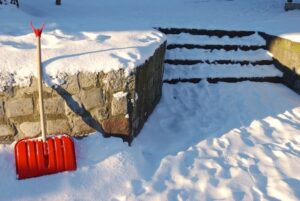The roads aren’t the only places snow and ice make more dangerous as winter descends upon the Upper Midwest.
We recently wrote about the risks of winter driving. However, in the coming months, snow and ice will create a number of injury risks, whether at home, school, work, or play.
 Most injury “accidents,” are not accidents in the strictest sense of the word. Failure to prepare, lack of safety education or equipment, failure to respect the risks, irresponsible behavior, or inadequate response are among the most common causes of winter-weather injury. Whether a damage claim can be made against another at-fault party will depend on the facts of an individual case. At-fault motorists, property owners, employers and city or government entities are among the most likely defendants when an action, reaction, or failure to take action results in personal injury or wrongful death.
Most injury “accidents,” are not accidents in the strictest sense of the word. Failure to prepare, lack of safety education or equipment, failure to respect the risks, irresponsible behavior, or inadequate response are among the most common causes of winter-weather injury. Whether a damage claim can be made against another at-fault party will depend on the facts of an individual case. At-fault motorists, property owners, employers and city or government entities are among the most likely defendants when an action, reaction, or failure to take action results in personal injury or wrongful death.
Common Winter Injury Risks
Hypothermia: The body’s response to extreme hot or cold can cause life-threatening medical conditions. With cold weather comes the risk of hypothermia. Those who work outside face the highest risks. Physical signs include shivering, exhaustion, confusion, fumbling hands, memory loss, slurred speech and drowsiness.
Carbon Monoxide: This invisible killer is most often caused by auxiliary heating units, such as kerosene heaters. But oil, wood and coal heat can also create lethal levels of carbon monoxide (as can portable generators). Wisconsin Department of Health Services reports carbon monoxide is the most common cause of fatal poisonings. Wisconsin State Law now requires carbon monoxide detectors to be placed on each floor level in all Wisconsin residences.
Child Injuries: Special care must be taken to keep children safe. Children underestimate the risks, and are prone to spending more time outside at greater energy expenditure. Skating, skiing, sledding and snowmobiling all create additional risks. Proper attire and safety gear, along with education and adult supervision, can go a long way toward keeping children safe.
Sidewalk and parking lot injuries: Unsafe conditions on sidewalks, or in parking lots or on business property, can also increase injury risks. Many cities have ordinances requiring property owners to keep properties safe from winter hazards. For example, snow-removal regulations in Madison require property owners to remove snow and/or use sand, salt or other suitable substance, by noon of the day following snowfall. Those who fail to comply are billed for snow removal by city crews and unpaid bills or fines are added to property taxes.
Sawyer County reminds property owners that Wisconsin Statutes 86.01, 86.07, and/or 346.94 prohibit pushing snow across a highway or into a public right of way. Doing so may create potential safety concerns for the traveling public and may impede the snow and ice removal process. Furthermore, snow shall not be stored in any manner which will obstruct or limit vehicular or pedestrian vision, movement, or access.
Work injuries: Winter weather may also increase risk of work injuries in Wisconsin. Injured employees should be entitled to workers compensation benefits by law (Wis. Stats. 102.01).
Snowmobile/Recreation Injuries: Many Wisconsin residents choose to live here because of the many outdoor recreational and seasonal activities we have to offer. However, these activities are not without risk. Injuries caused by snowmobiling, skiing or other activity may or may not be compensable. Safety equipment, proper participant education and training, a healthy respect for the risks, and supervision of young or novice participants can all reduce injury risks. When a serious accident does occur, consulting an experienced injury attorney in Hayward or Winter will best determine your rights.

